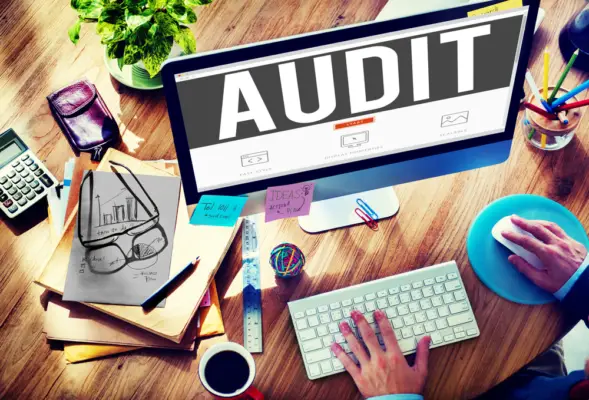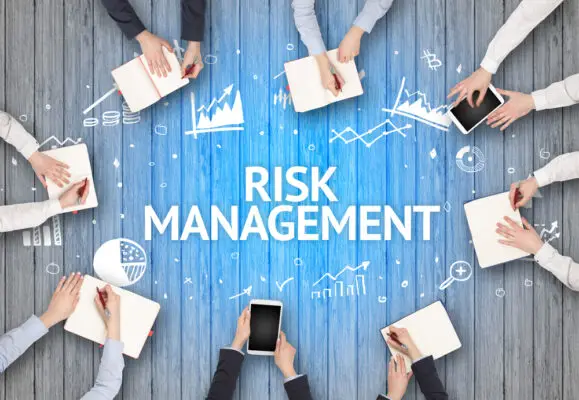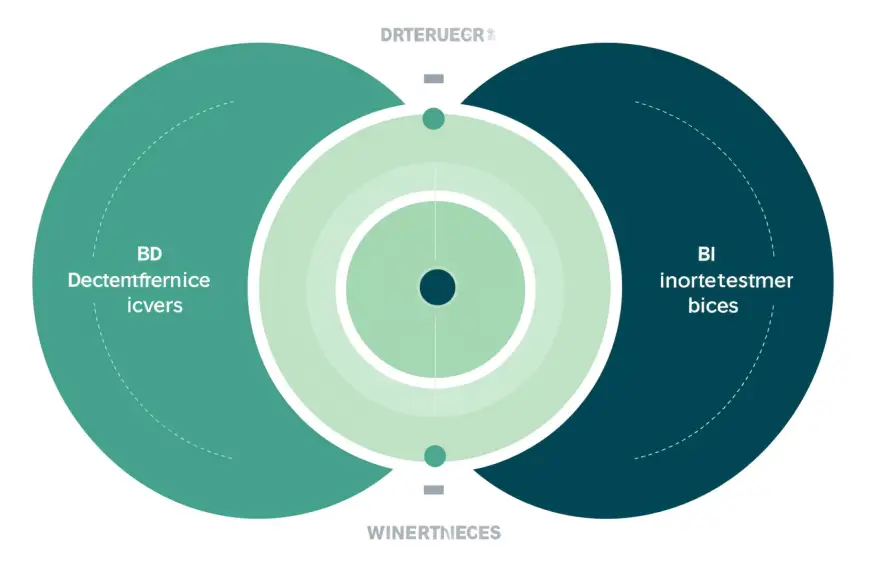The Three Lines of Defense model is a popular framework for managing risk and ensuring robust corporate governance. The model facilitates effective risk management and control communication by clarifying the essential roles and responsibilities.
It encourages a comprehensive understanding and effective handling of risk and control within an organization. Here are the three lines:
First Line of Defense – Operational Management: The first line of defense is the functions that own and manage risks. These individuals and teams are directly involved in the business’s day-to-day operations.
They are responsible for identifying, assessing, controlling, and mitigating risks in their areas of operation. They are also in charge of implementing corrective actions to address process and control deficiencies.
Second Line of Defense – Risk Management and Compliance Functions: The second line of defense consists of activities covered by several components of risk management and compliance, including risk control, financial control, quality control, and inspection.
The individuals in this line monitor and facilitate the implementation of effective risk management practices by the operational management and help define risk policies and procedures. Their responsibility is to ensure compliance with internal policies and external laws and regulations.
Third Line of Defense – Internal Audit: The third line of defense is independent of the first two. It assures the organization’s board of directors, audit committee, and executive management.
This is done through the internal audit function, which assesses the effectiveness of the first and second lines of defense. Internal Audit ensures all processes and systems function as intended and that the organization complies with laws, regulations, and internal policies.
They are collaborative, each crucial in the organization’s wider governance framework.
The Three Lines of Defense framework aims to guide how organizations can effectively manage risks and achieve regulatory compliance.
The Three Lines of Defense model is widely used in various industries, including finance, healthcare, and government. The Three Lines of Defense framework involves three lines of defense that work together to achieve effective risk management and regulatory compliance.
Each line has a unique responsibility and contributes to the overall success of the organization’s risk management efforts.
In this article, we will explore each line of defense in detail and discuss the benefits of implementing the Three Lines of Defense model in your organization. We will also provide practical tips on how to implement this framework successfully.

The First Line of Defense: Operational Management
The initial layer of protection in risk management is Operational Management, which involves implementing procedures and protocols to prevent and detect potential threats.
Effective strategies for Operational Management include establishing a clear chain of command, defining roles and responsibilities, setting performance objectives, monitoring progress regularly, and providing training opportunities for employees.
A well-designed operational framework can help organizations identify risks early on, respond promptly to incidents when they occur, and avoid costly consequences.
One of the critical challenges facing Operational Management is striking the right balance between risk mitigation and business optimization.
Managers must weigh the costs of implementing preventative measures against the benefits of taking calculated risks. In addition, they must also consider how different risks interact with each other across different parts of the organization.
For example, a cyber-attack on one department could have ripple effects throughout the entire company’s network infrastructure. Another critical issue in Operational Management is ensuring compliance with regulatory requirements and industry standards.
Failing to comply with these regulations can result in legal penalties or reputational damage that may negatively impact an organization’s bottom line.
Therefore, managers must stay updated about changes in legislation or guidelines related to their industry and ensure that their policies align with them.
The Second Line of Defense: Risk Management and Compliance
The second layer of protection in organizational risk mitigation involves a comprehensive approach to identifying, assessing, and managing potential hazards by implementing regulatory compliance and risk management frameworks.
This second line of defense is necessary because it provides an independent oversight function that helps ensure alignment with external regulations, internal policies, and procedures. The objective is to establish a robust framework for evaluating risks associated with conducting business activities.
Risk mitigation strategies are essential in this layer of protection as they help reduce uncertainty related to potential losses arising from operational activities.
Regulatory adherence is another critical aspect that ensures organizations comply with relevant laws and regulations governing their operations. This includes monitoring changes in legislation or emerging trends related to industry practices that could impact business operations.
Compliance and risk management frameworks typically involve establishing governance structures, policies, procedures, monitoring mechanisms, and reporting protocols to ensure compliance with regulatory requirements while mitigating risks associated with business operations.
The goal is to create a culture of compliance within the organization where employees understand their roles in upholding ethical standards while adhering to applicable laws and regulations.
Thus, by implementing these frameworks effectively, organizations can significantly reduce threats posed by potential hazards while maintaining high integrity in their operations.
The Third Line of Defense: Internal Audit
Internal audit is a crucial component of organizational risk management that provides independent assurance and consulting services to improve the effectiveness of governance, risk management, and control processes.
The third line of defense operates within an organization as an objective assessment function that evaluates the adequacy and effectiveness of internal controls.
Internal auditors are responsible for ensuring compliance with laws and regulations, reviewing financial statements for accuracy, identifying areas where fraud or waste may occur, and providing recommendations to improve overall operations.
Organizations should consider implementing a rigorous quality assurance program to ensure that internal audit best practices are followed. This program should include periodic evaluations of the internal audit function’s performance against defined standards.
Additionally, it should involve ongoing training opportunities for staff members to develop their knowledge and skills in auditing techniques.
Organizations must also foster open communication between internal auditors and other stakeholders to address issues arising during audits promptly. Improving audit effectiveness requires internal auditors to identify areas where improvements can be made proactively.
This includes conducting risk assessments regularly to identify emerging risks that could impact the organization’s objectives.
It also involves engaging with stakeholders throughout the organization on an ongoing basis to understand their concerns and needs better.
Internal auditors can provide valuable insights into how the organization can reduce risks while improving operational efficiency across all departments without compromising its mission or values.
Benefits of the Three Lines of Defense Framework
A comprehensive risk management framework incorporating three distinct layers can facilitate identifying, evaluating, and mitigating risks while increasing organizational resilience to external and internal threats. Benefits include:-
Clarifies Roles and Responsibilities: One of the critical benefits of the Three Lines of Defense model is that it provides a clear, organized structure that outlines the roles and responsibilities of different parts of the organization.
This avoids confusion and helps ensure everyone knows their risk management and control role.
Improves Communication: This framework also improves communication between different parts of the organization.
It helps to ensure that information about risks and controls is properly communicated up and down the organization, which can aid in decision-making and risk management.
Enhances Risk ManagementEnhances Risk Managementy delineating responsibilities for risk management, the Three Lines of Defense model can help to ensure that risks are effectively identified, managed, and mitigated.
Ensures Compliance: The model aids organizations in meeting regulatory requirements and standards by maintaining a robust risk and control environment. It ensures an effective internal control system is in place, which is a critical aspect of regulatory compliance.
Increases Organizational Efficiency: By separating risk management functions into three distinct categories, organizations can avoid duplication of efforts and increase efficiency.
It also eliminates confusion about who is responsible for what, reducing potential gaps or overlaps in risk management.
Boosts Confidence among Stakeholders: When an organization adopts a model like the Three Lines of Defense, it can assure stakeholders – including investors, customers, and regulators – that the organization has a robust system for managing risk and ensuring compliance.
Strengthens Decision-Making Processes: With a clear understanding of risks, organizations can make more informed decisions that align with their strategic objectives and risk appetite.
One major benefit of the TLoD framework is improved accountability. By dividing responsibilities among different lines, the likelihood of individuals evading accountability for risks decreases significantly.
Operational managers are responsible for identifying and assessing risks within their respective departments while implementing appropriate controls. Risk control teams provide independent oversight to ensure these controls function effectively.
Internal auditors verify the effectiveness of risk management processes across all departments objectively. This distribution of responsibilities ensures that each layer remains accountable for its actions.
Another advantage of adopting TLoD is enhanced risk management capabilities. The framework enables organizations to detect emerging risks before they escalate into crises by providing multiple layers of defense against them.
In addition, it promotes collaboration between departments by encouraging communication between operational managers, risk control teams, and internal auditors regarding ongoing issues or potential risks identified during routine operations or audits.
Thus, organizations can proactively identify new opportunities while minimizing negative impacts on business objectives due to unanticipated events.
Implementing the Three Lines of Defense (TLoD) framework can benefit an organization’s overall risk management strategy by improving accountability and enhancing capabilities to manage emerging threats effectively.
Implementing the Three Lines of Defense in Your Organization
The effective implementation of the Three Lines of Defense framework in an organization can be achieved through careful consideration and adoption of the distinctive roles and responsibilities attributed to operational management, risk control, and internal audit.
The first line of defense involves operational management, identifying risks arising from their activities, and implementing mitigation controls.
To ensure this is done effectively, organizations must provide sufficient training to staff members on identifying and managing risks. Operational managers should also monitor the implementation of controls regularly.
The second line of defense involves risk control functions such as compliance, legal assurance, human resources, and quality assurance departments.
These departments should work closely with operational management to guide risk identification and control measures. They should also regularly assess the effectiveness of these controls in mitigating identified risks.
Practical tips for effective implementation include defining clear roles for each department in the Three Lines model, ensuring open communication channels between all parties involved, and regular monitoring and reporting mechanisms.
Common challenges faced during implementation include resistance from operational managers who may perceive additional oversight as threatening their autonomy or workload demands.
A lack of resources or unclear mandates can also hinder effective implementation. However, emphasizing the benefits of adopting this model, such as improved regulatory compliance and better decision-making processes, leads to enhanced organizational resilience against emerging threats.
It becomes possible to minimize these challenges gradually over time without compromising overall effectiveness when managing risks proactively across different levels within an organization structure using the Three Lines Model.

Frequently Asked Questions
What is the history of the three lines of defense framework?
In 2013, the Institute of Internal Auditors (IIA) endorsed the Three Lines of Defense model as a recommended risk management, control, and governance approach. This endorsement helped to popularize the model and cement it as a best practice in many organizations.
In July 2020, the IIA revised the model to become the “Three Lines Model.” The updated model shifts the focus from defense against risks towards a more proactive and holistic approach to achieving objectives.
It provides principles-based, flexible guidance for implementation in different types of organizations.
Over time, the three lines of defense model have become a widely accepted standard for effective risk management.
Today, it is recognized as an essential tool for organizations seeking to identify and manage risks proactively.
Despite its widespread adoption, there continues to be an ongoing debate over the effectiveness and practical application of the three lines of defense framework in different contexts.
How do the three lines of defense framework differ from other risk management methodologies?
Compared to other risk management methodologies like COSO and ISO, the Three Lines of Defense framework has several advantages and disadvantages.
One key advantage is its clear delineation of roles and responsibilities between different levels of the organization, which allows for better coordination and collaboration in managing risks.
On the other hand, some critics argue that it may lead to silos or duplication of work.
Despite these criticisms, the Three Lines of Defense framework remains a popular choice for many organizations due to its effectiveness in identifying and mitigating risks across various departments and functions.
Can the three lines of defense framework be applied to small businesses or is it only suitable for large corporations?
Small business benefits include improved risk management and control, increased transparency, and better decision-making processes.
However, some implementation challenges may arise due to limited resources or a lack of specialized personnel.
To address these challenges, alternative risk management approaches for small businesses include adopting a more informal approach that involves collaboration among employees and stakeholders.
Also, outsourcing risk management activities to third-party providers or implementing a simplified version of the three lines of defense framework tailored to their needs.
Are there any potential drawbacks or limitations to implementing the three lines of defense framework?
Potential drawbacks of implementing the three lines of defense framework may include a lack of flexibility and adaptability to changing business environments. While the framework promotes effective risk management, it may also create bureaucratic processes that hinder decision-making and slow operations.
Additionally, smaller businesses may struggle to implement all three lines due to limited resources and personnel.
Alternatives to the three lines of defense framework include a more integrated approach to risk management, where all employees are responsible for identifying and managing risks in their work areas.
While the three lines of defense can be an effective tool for large corporations with complex operations, organizations must consider their unique needs and capabilities before adopting this framework.
How can an organization measure the effectiveness of its three lines of defense system?
Organizations can use key metrics and best practices to measure the effectiveness of the three lines of the defense system.
Internal Audit: As the third line of defense, the internal audit function can independently assess the effectiveness of the first and second lines of defense.
This might involve reviewing the risk management practices of operational management (first line) and the policies and procedures established by the risk management and compliance functions (second line).
Key Performance Indicators (KPIs): Organizations can develop KPIs that relate to the functions of the three lines of defense. For example, KPIs for the first line might include measures of operational performance and risk incidents, while KPIs for the second line might focus on compliance metrics.
External Audit: An external audit can provide an additional layer of assurance over the effectiveness of the Three Lines of Defense system. External auditors might review financial reporting controls, regulatory compliance, and other relevant areas.
Regulatory Review: For certain industries, regulatory bodies may perform reviews or inspections that can help to assess the effectiveness of an organization’s Three Lines of Defense system.
Management Review: Senior management should regularly review the effectiveness of the organization’s Three Lines of Defense system. This might involve reviewing reports from the internal audit function, monitoring KPIs, and assessing the management of key risks.
Risk and Control Self-Assessments (RCSA): This involves individuals or teams within each line of defense evaluating their own performance and effectiveness. It helps to identify gaps and areas for improvement.
Board Review: The organization’s board of directors (or a relevant board committee, such as the audit or risk committee) should oversee the Three Lines of the Defense system and regularly review its effectiveness.
Best practices could include regular employee training on risk management, clear documentation processes, and consistent monitoring of potential risks.
It is essential to regularly review these metrics and practices to improve the three lines of the defense system continuously.

Conclusion
The Three Lines of Defense framework is crucial for organizations to manage risks and achieve their goals effectively.
The first line of defense involves operational management, where managers take ownership in identifying and managing risks within their areas of responsibility.
The second line is responsible for risk management and compliance, ensuring policies and procedures are in place to mitigate potential risks.
Finally, the third line of defense consists of internal audit functions that provide independent assurance of the effectiveness of risk management practices.
Adopting the Three Lines of Defense framework can provide numerous benefits, including increased transparency, improved communication between departments, enhanced risk identification and management capabilities, and better alignment with industry best practices.

Chris Ekai is a Risk Management expert with over 10 years of experience in the field. He has a Master’s(MSc) degree in Risk Management from University of Portsmouth and is a CPA and Finance professional. He currently works as a Content Manager at Risk Publishing, writing about Enterprise Risk Management, Business Continuity Management and Project Management.

